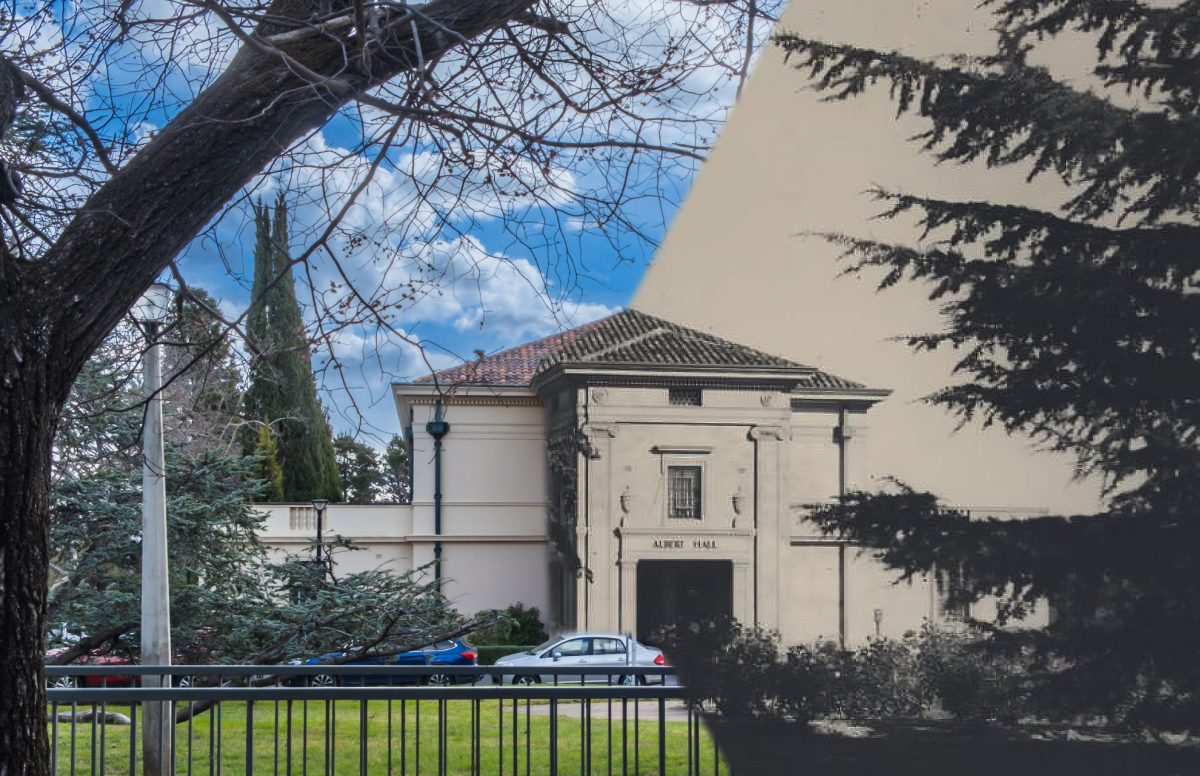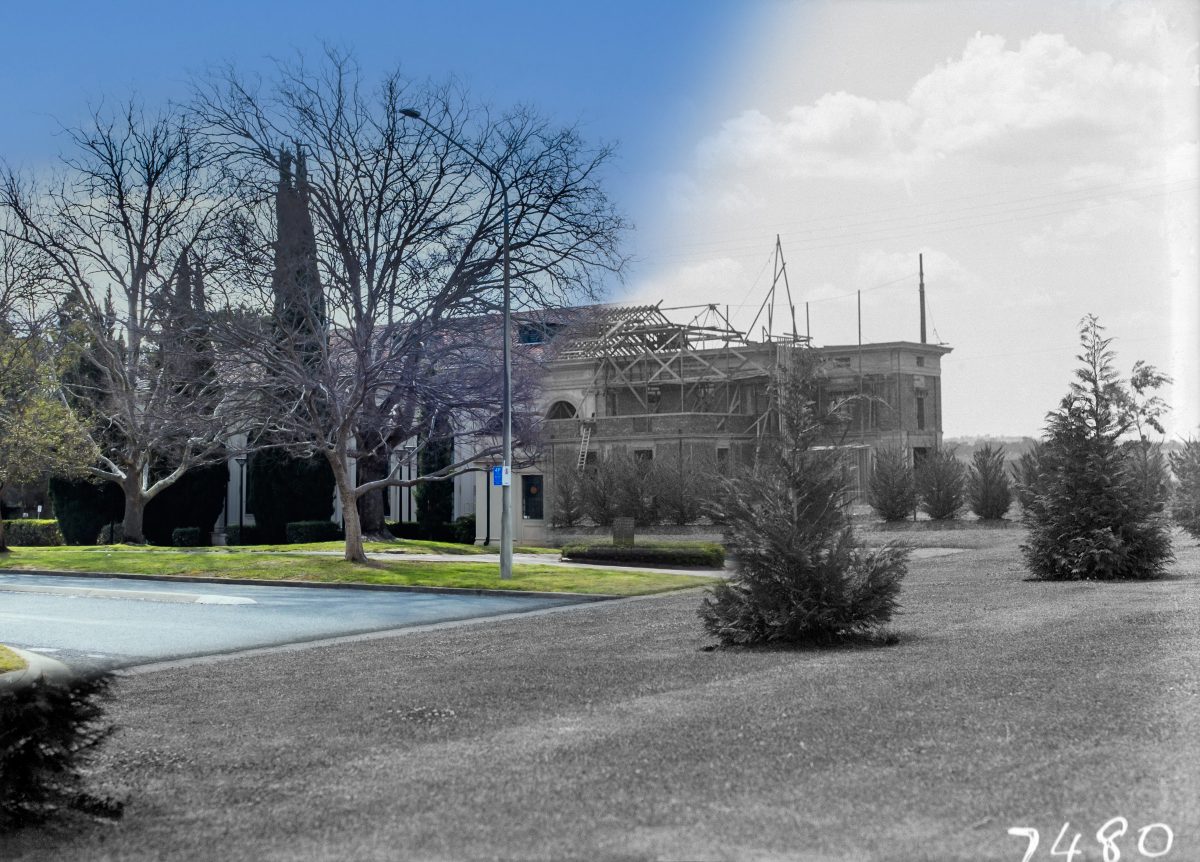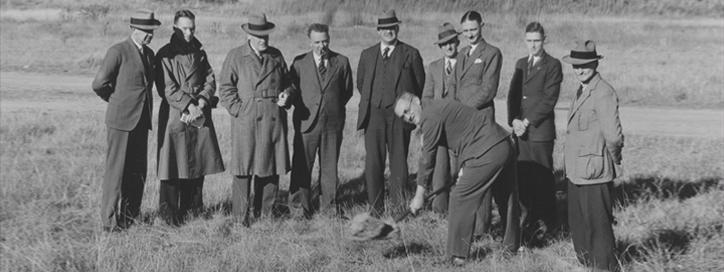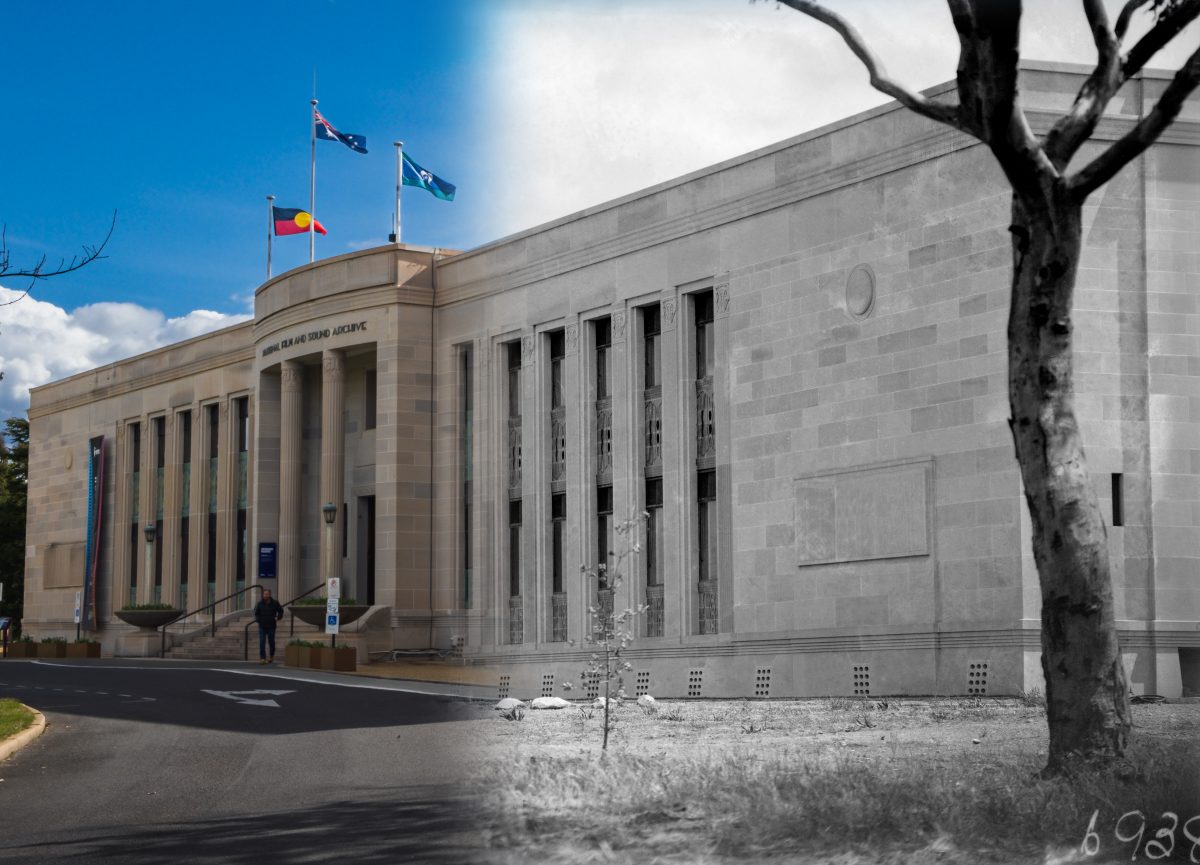
Albert Hall, a Simmie & Co building. Photo: Dom Northcott.
Ever looked at Canberra’s older buildings and wondered why they share similar design characteristics? There’s a simple reason for that. They were all built by the same company.
Operating in Canberra from 1926 to 1969, Simmie & Co constructed some of the city’s most iconic landmarks, including the Australian War Memorial, Albert Hall and the National Film and Sound Archive (formerly Institute of Anatomy).
The National Capital Exhibition in Commonwealth Park is hosting Well Built: Simmie & Co Master Builders in Canberra 1926 – 1969 to highlight the people who made these buildings happen.
The extensive collection of photographs, construction and farm business records, artefacts and ephemera – even historic farm machinery – has been brought together by the grandson of the master builder himself, Dr Richard Simmie.
Richard was 13 years old when his grandfather, Jock Simmie, died in 1968 and he’s spent the past few decades researching his work alongside the Royal Historical Society of Victoria.

Modern-day Albert Hall morphing into a photo taken during construction in 1928. Photo: Dom Northcott.
“I hadn’t realised the extent of what he did,” he says.
It all began with three brothers: Jock, George and Bill. Jock and Bill trained as carpenters and George as a clerk, but World War I arrived before they could set about business in earnest.
Two served in the Gallipoli campaign and all on the Western Front. They returned, safe but wounded, to Australia in 1924.
Looking for a fresh start in the strange post-war era, the brothers drew on their complementary skillsets and promptly established Simmie & Co in Melbourne.
“Having good business acumen, Jock saw an opportunity in moving to Canberra and getting involved with the building of the capital of Australia from the ground up,” Richard says.
Two years later, in 1926, the Canberra arm of Simmie & Co was handed their first project – the ‘Civic Centre’, or as it’s now called, the Melbourne Building.

Breaking the sod for the Civic Theatre in 1935. Jock Simmie is fourth from the left. Photo: R C Strangman, NLA.
“Even though Jock continued to live in Melbourne, he spent the next 40 years travelling between the two cities every third week to manage Canberra while his older brother managed Melbourne,” Richard says.
In the years to come, Simmie & Co built Albert Hall (1928), CSIRO (1928), the Institute of Anatomy (1931), the Presbyterian Church of St Andrew (1934), the Civic theatre (1935), the original National Library (1935), the Australian War Memorial (1941), RG Menzies Library (1963), several of the embassies, and a variety of private and public residences in the suburbs of O’Connor, Narrabundah and Forrest.
Richard says there are a couple of reasons why they might have scored so many high-flying contracts.
“After the war, the government favoured veterans, especially those who had some nous,” he says.
“Jock was also heavily involved with the Freemasons. And if you look at the prominent people of the time, a lot of them were also involved with the Freemasons, so there would have been that brotherhood – a lot of contacts and doors being opened.”
On the ground was a far cry from today’s construction sites. There was next to no personal safety equipment, and simple mechanised steam shovels and horse-drawn scoops, picks and shovels were the order of the day. It was back-breaking.
“Canberra was a pretty sparse place in 1926,” Richard says.
“Workers lived in tents for many, many years, away from their families so that the conditions would have been appalling. But they must have had a drive to work.”
Richard says these are the people time has forgotten … well, mostly.
During the demolition of the original National Library off King’s Avenue in 1970, a newspaper dated 14 June 1935 and a small handwritten note were found inside one of the entrance columns.
“It was their own time capsule, a reminder to future generations that they had been there,” Richard says.
“It lists the foreman, the general foreman, the painter, and all the other builders – all these people who would have otherwise been totally forgotten.”
Richard says the new expo is not only about these unsung heroes but also about promoting Canberra’s heritage.
“As a young nation, we still don’t really respect and honour our heritage enough. Hopefully, that’s something we can change.”

The National Film and Sound Archive, another Simmie & Co building. Photo: Dom Northcott.
As for Simmie & Co, the company folded in 1978. It turns out Jock’s nephews weren’t endowed with the same drive to keep it going. But Richard says that were Jock around today, he’d still be at it.
“He would have risen to the challenge because nothing was too big or too small for him. He would love how much of it has been preserved.”
Well Built: Simmie & Co Master Builders in Canberra 1926 – 1969 is open at the National Capital Exhibition, Regatta Point, seven days a week until 15 December 2022. Entry is free – no bookings are required.
Original Article published by James Coleman on Riotact.


